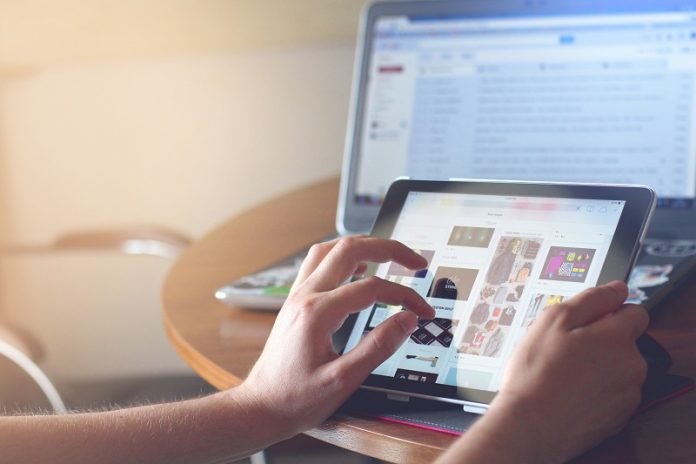
Prices of U.S. goods across the board have shot up over the past few months, making high-end items even more out of reach for everyday consumers.
But if you’ve shopped online since the pandemic began, you may have noticed that when you add items to your shopping cart, you now have options that could make them seem more affordable.
Depending on where you shop, one of those options might be Afterpay.
Using Afterpay, with just a click of a button, a $548 Tory Burch bag costs just $137, the cost of Lululemon leggings is cut from $118 to $29.50, and $170 UGG boots now become $42.50.
Afterpay—an example of a “buy-now, pay-later” app—allows you to split the cost of an item into four interest-free installments spread out over six weeks.
If you miss a payment, you are charged late fees, which Afterpay says are capped at 25% of the item’s price.
Apps like Afterpay have become increasingly popular since the pandemic began due to an overwhelming shift to online shopping, according to Nerdwallet.
In 2021, Americans spent $20 million using these apps to make purchases from various retailers, SFGATE reports, and this number may rise in 2022, as the apps start to move into the everyday purchase market by partnering with companies like Rite-Aid.
“This partnership will help customers access and spend responsibly on everyday goods with Afterpay’s powerful budgeting tool,” Afterpay said in a statement.
But there are downsides to using the apps.
Financial experts told SFGATE that the apps encourage people to spend more than they otherwise would, and that they normalize debt as Gen Zers try to keep up with ever-changing fashion trends.
Far from helping customers spend responsibly, these apps actually depend on people making financial mistakes, and Northeastern experts remind buyers to beware.
While “buy-now, pay-later” apps may look like new and innovative ways to pay, payment plans like Afterpay have been around for a long time, says Vincent Muscolino, finance lecturer at Northeastern’s D’Amore-McKim School of Business.
“Retailers, for example, had what they called layaway plans for decades,” he says. Companies like Sears once allowed customers to pay for items in installments before picking them up. Similarly, phone companies like Apple will split up costs instead of providing discounts.
“It allows someone to buy a $1,000 phone, for example, and have it feel like it’s 20 bucks a month,” he says. “It can potentially take a large payment and make it feel more friendly.”
In some ways, it’s similar to using a credit card. When a consumer pays the monthly balance, “It really is an interest-free loan,” says Bob Triest, Chair and Professor of Economics at Northeastern.
Of course, most people do not pay off their full balance each month, and this, combined with money from surcharges on merchants, is how credit-card companies make money.
What’s different—and more risky—about “buy-now, pay-later apps” is in the psychological power of seeing a lower price.
“Somehow it feels cheaper to people” to use a pay app that divides the cost by four, Triest says, especially as prices continue to rise. For Afterpay to be profitable, he says, they most likely expect people to miss payments as a result of overextending their finances.
“They’re making a bet, I think, that most people, or a sufficiently large number of people, will not pay in full during the period where it’s free, and they will make their money off of those people,” he says.
The bet is likely paying off: SFGATE reports that out of the Gen Z users of the apps, 43% have missed a payment.
Muscolino also notes that using Afterpay might not be as free as it seems, as the cost might be built into the cost of the item.
SFGATE reports that the apps usually take 3% to 4% cut of each purchase, a cost that may be passed on to the consumer in the form of higher prices. “Nothing ends up being free,” Muscolino says.
Does this mean consumers should stay away from “buy-now, pay-later” apps? Not necessarily. Muscolino recommends that consumers focus on saving first, while the apps encourage you to do the opposite—spend now.
But if you want to use Afterpay, you can do so wisely by making sure items fit into your personal budget, and by reading the fine print. If you use it, he says, you should have the finances to pay off the balance today if you had to.
As for impulse buys and overspending, maybe give them a second thought. “Think about it carefully if you’re using [these apps] as a reason to maybe stretch too far,” he says.
Written by Jessica Taylor Price.



